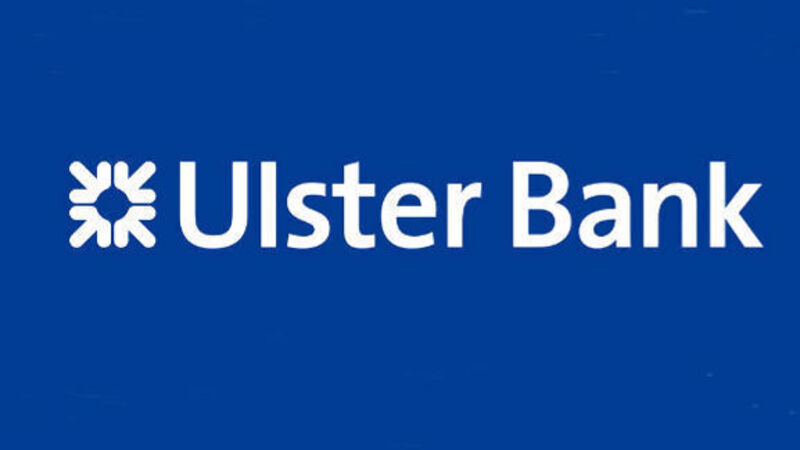Cuts better than exit

It wasn’t. In fact, there is a strong case that the announcement of the outcome of the strategic review of the bank was good news for customers, the wider banking market, and the economy.
Ulster’s parent bank, RBS, had reasons for finally walking away from a market place that, over the last five years, has seen them writing off well over €15bn — a period which saw RBS itself effectively nationalised and shipping serious losses. In 2012, Ulster Bank lost €1bn, albeit that the Irish pillar banks also made very significant losses.
For senior figures in the City of London, the bank’s performance in recent years raises serious issues:
* Can Ulster Bank be turned around?
* When is the Irish banking market going to be profitable again?
* Should shareholders really be committed to a problematic market at a time when RBS is itself under pressure to raise additional capital?
Then there is the matter of the IT debacle in 2011/2012, which hit the banks bottom line and its reputation.
Those kinds of questions will have been swirling around board rooms and trading desks. There was the question of RBS setting up a ‘bad’ bank. There was also the possibility, floated by the UK Treasury, that both governments might ‘swap’ Ulster Bank’s troubled non-performing assets in Ireland for part of Nama’s UK portfolio, which didn’t fly. But all of this indicates that the kind of uncertainties within which decisions were being made
The fact that RBS/UB, in these circumstances, decided to maintain its presence in Ireland, rather than the cutbacks that are the consequence of this decision, is the more important point.
A major strategic review of its operations, including an evaluation of how best to reduce its costs, was absolutely inevitable. This strategy presented to investors is based on creating a “smaller, more focused and profitable bank”, on the key assumption of a recovery in the economy and in banking in the 2013-2016 system.
This is not to minimise the impact of the reduction in jobs — from about 5,800 now to between 4,000 and 4,500 by 2016 — or the contraction in branch network from 214 to 175/185 over the same period. These will have a very real impact across the Republic and the North.
The jobs cuts will be largely voluntary. Even so, they do represent a contraction in the number of banking jobs in Ireland, once a powerhouse for graduate recruitment. It does not represent the end of branch banking — but rather the transition to a different model, which has been accelerated because of performance pressures.
The contraction in bank network will have an important impact in rural areas where the presence of a branch is an important part of the social, as well as the economic, infrastructure. Last year, AIB announced significant branch closures, while Bank of Ireland opted to leave its network and to generate savings in other areas.
There are ways of mitigating the impact of branch closures on local economies. AIB, for example, provides some banking services through the Post Office network, which operates a strong network across rural Ireland and in smaller towns. There is, in fact, an opportunity to implement a more radical approach, as set out on these pages some months ago — namely, a strategic alliance of the post office network and the credit unions, to create a new ‘social banking’ system with a strong presence in and across the heartland of Ireland.
However, from a purely commercial perspective, Ulster Bank’s decision to put greater emphasis on internet and mobile banking makes compelling sense. The percentage of transactions carried out by customers within the branch has shrunk to just over 20%, from 30% just four years ago, while, at the same time, the number carried out online has risen to 30%. Important as these trends are, there are important person-to-person dimensions that cannot be measured.
The need to reduce costs and the opportunity to leverage customer migration to, for example, banking via mobile apps — which now account for 15% from a standing start — is a key part of the strategy to create a “smaller, lower cost and profitable bank”.
In all of this, it’s worth reflecting on the alternative, which might have involved an exit by Ulster Bank from the Irish market. It is arguable that such a decision might have made sense back in 2009, before the scale of losses arising from write-offs became a haemorrhage.
Having absorbed the losses, there is a case to be made for effectively rebooting the bank. But the doomsday scenario of simply winding down the bank’s entire operation was a possible baseline assumption. This would have put more than 5,000 jobs at risk and much, if not all, of the branches coming onto a still depressed retail market.
An exit by Ulster Bank or a fire sale would also have meant the end of a substantial international retail/corporate presence.
This international dimension is important, especially since AIB was forced to dispose of its presence in the UK, Poland, and the US which it had built up over decades.
This was a short-sighted and counterproductive strategy imposed by the authorities. The international capability of an economy is difficult to build up and AIB had been very successful in its strategy of internationalisation — reducing its dependence on the domestic market, diversifying its balance sheet and earnings stream and, importantly, creating a pool of expertise particularly relevant to the needs of a small open economy.
It follows from all this that an exit by Ulster Bank, with its strong international connections through RBS, would have further exacerbated this diminution of the international reach of Ireland’s banking sector.
An important part of the capability of the domestic banking sector in any economy is the extent to which effective decision-making is actually located within the domestic market. When real responsibility is progressively pulled back by non-national parent banks, so all important decisions are made in foreign capitals by managers with little knowledge of, or commitment to, the country, then the banking system — as well as the economy itself — is enfeebled.
The fact that Ulster Bank will retain its 170-year presence in the Irish market, and with substantial decision- making powers, is therefore a big deal.
It remains the case that the decision to stay, and the strategy underlying this decision, is based on current economic forecasts. These are optimistic. The immediate issue here is not whether they are realistic. I would have reservations on this.
The point is that the bank management, and, RBS, are supportive of these forecasts. It is the robustness, or otherwise, of these forecasts which will determine the future trajectory of write-offs and a continuing improvement in net interest margin which — together with a projected reduction in the banks cost/income ratio from over 60% to 50% — that will determine its return to sustainable profitability.
Well before the 2016 end-point of the bank’s strategy, two issues will have been resolved. The first is whether the economy does, in fact, recover because a bank is only as strong as the economy it services.
The second is what happens to RBS after the UK government sells its 82% shareholding — specifically, what will the new owners’ intentions be in relation Ulster Bank.
Ulster Bank must hope a successful implementation of its new strategy will make it easy for the new owners to decide to continue to commit to a strong presence in Ireland.
This will be even more important in the event that Ireland remains within the eurozone because if, as seems possible, the UK does renegotiate its own status with the EU, then the “single island economy” will pulled further apart and a strong cross-border capability will be even more important, for all kinds of reasons.
Both of these issues raise important questions. The bigger picture is that, for the immediate future, Ulster Bank and its parent RBS have opted for a shot at redemption — in the words of the eponymous ‘Al’ in Paul Simon’s 1986 hit ‘You Can Call me Al’.
Ulster Bank, as the third largest banking institution, will provide needed competition to the other domestic institutions and, also, more options for consumers. It will provide access to specialised global risk management services, which are central to a small open economy navigating the most severe economic dislocation in modern Irish history.
And it will contribute to a deeper and more pluralistic banking market, providing domestically rooted employment. Whatever the future holds, these are important attributes for a banking system and an economy under pressure.
















